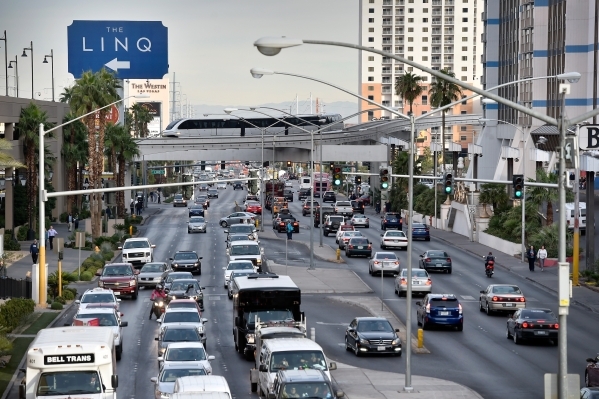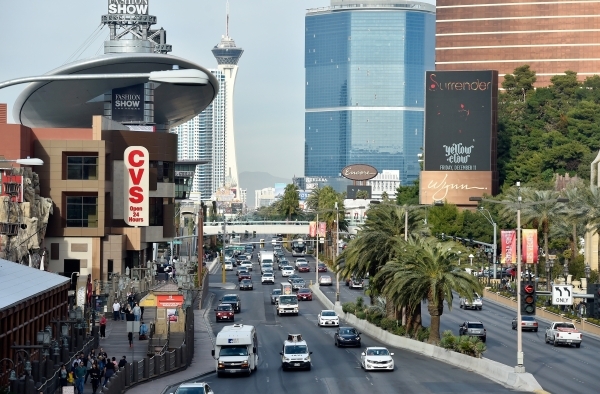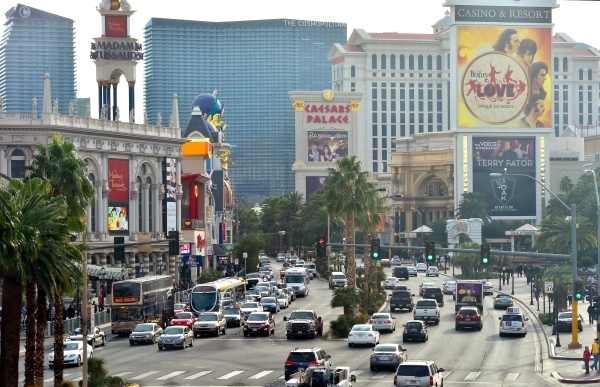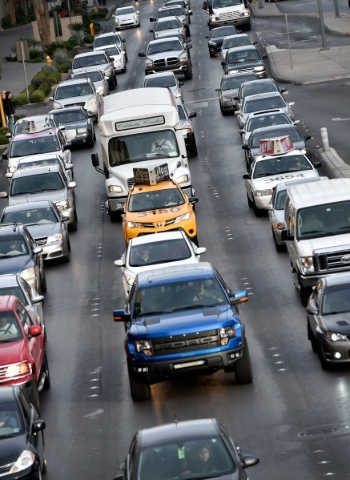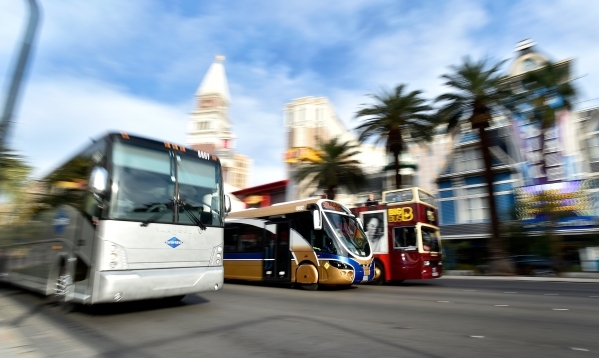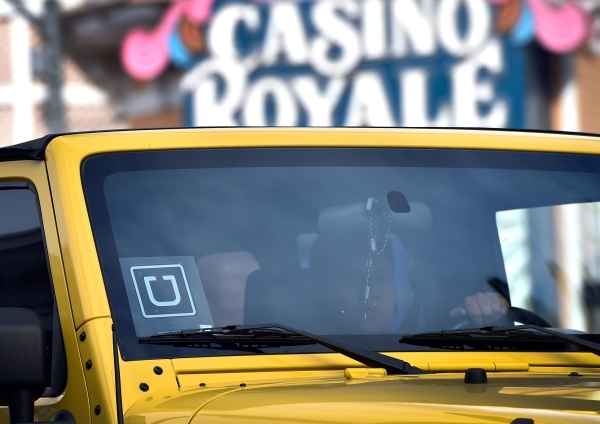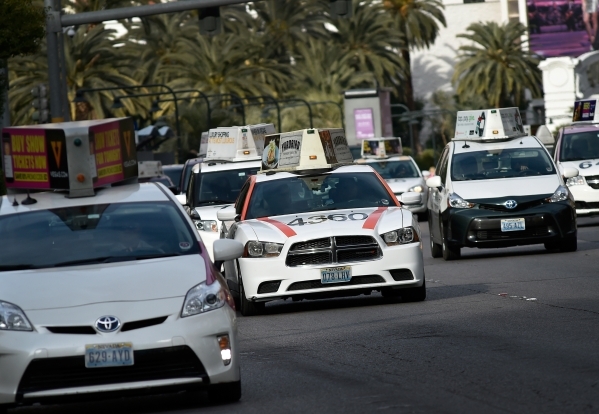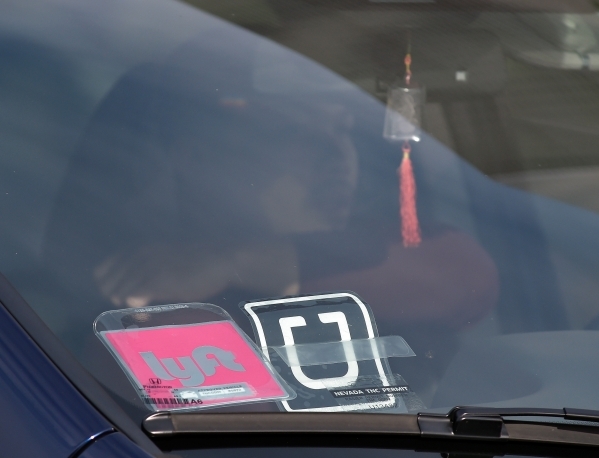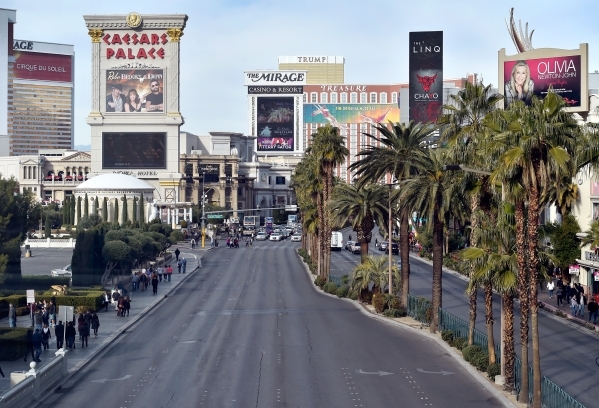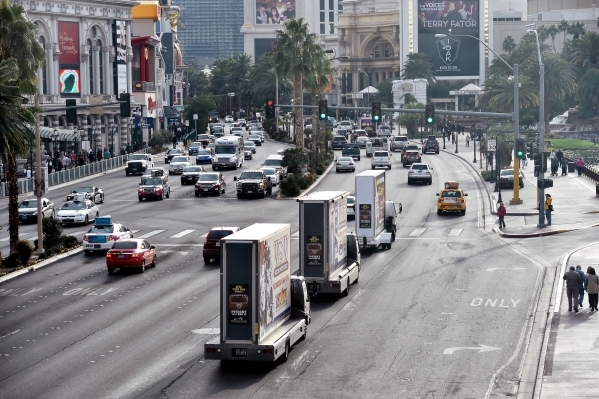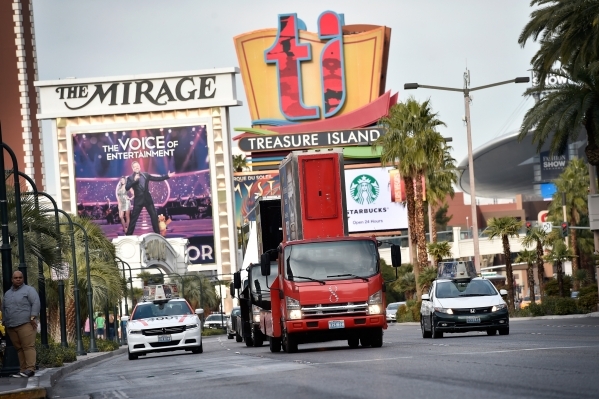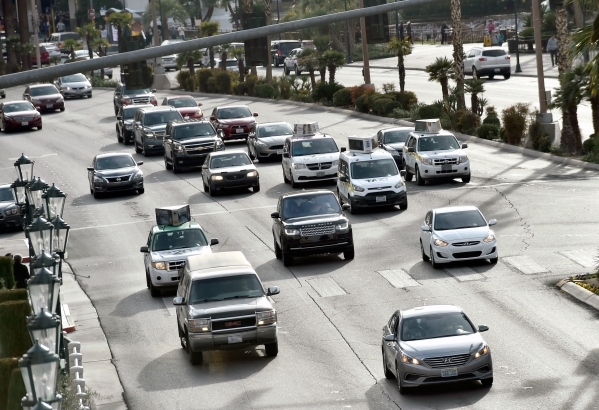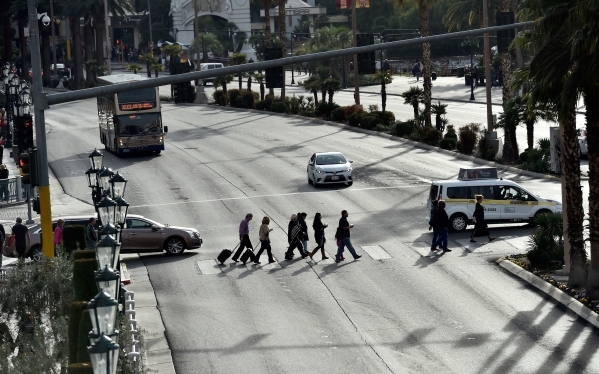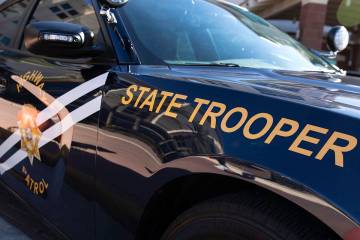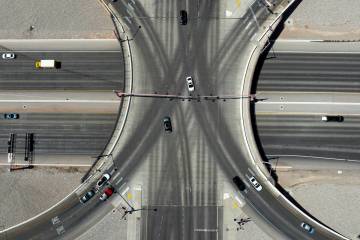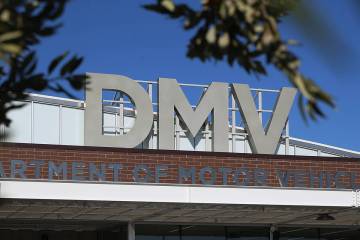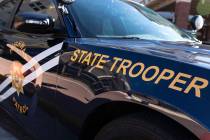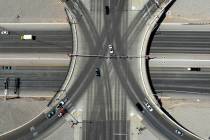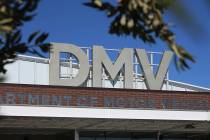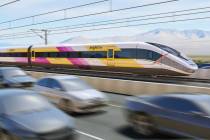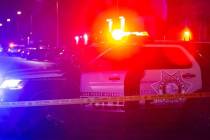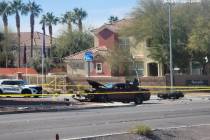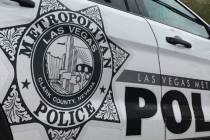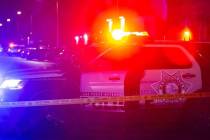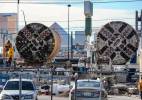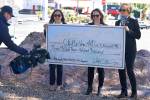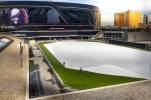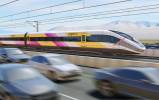Light rail, trolley system could be in Vegas’ future
Light rail, new pedestrian bridges over the Strip, a downtown Las Vegas trolley system and the connection of the city's major convention centers would be in the city's future under an ambitious transportation plan that would cost more than $12 billion and take decades to complete.
Tourism and transportation leaders on Monday unveiled a summary of a 2,400-page report that will be reviewed by local, county and state leaders over the next two months to begin the process of initiating what's being called "a blueprint for growth and transformation."
Local leaders have spent three years discussing the plan and professional planners used the last 18 months to conduct research and analysis. It will be presented publicly for the first time Thursday morning at the monthly meeting of the Regional Transportation Commission of Southern Nevada.
The big-ticket items of the plan:
*A light-rail system that would serve the McCarran International Airport, the Strip resort corridor and downtown Las Vegas. Construction and operation of the light-rail system is not included in the $12 billion price tag.
*Seven new pedestrian bridges over the Strip, including an iconic circular overpass structure at Las Vegas Boulevard and Sahara Avenue — a gateway between the Strip and downtown — the widening of Strip sidewalks and, in some locations, elevated walkways.
*A downtown Las Vegas circulator, envisioned by some as a trolley that would move pedestrians around the area.
*The extension of the Las Vegas Monorail to the Mandalay Bay Convention Center and the addition of a stop to serve the Sands Expo Center, linking the city's three major convention centers.
*The construction of multimodal transit centers at the airport, the Bonneville Transit Center and Cashman Center and transforming Maryland Parkway into a high-capacity transit line serving downtown Las Vegas, the Maryland medical and retail corridor, the University of Nevada, Las Vegas, and the airport.
Economist Jeremy Aguero of Applied Analysis and David Knowles, vice president of CH2M, Portland, Ore., gave a summary of the plan in presentations to invited guests and the media on Monday.
The plan's roots
The road to its preparation began three years ago when Las Vegas Convention and Visitors Authority President and CEO Rossi Ralenkotter convened representatives of the tourism industry to what was called the Transportation Steering Committee.
Ralenkotter asked committee members to consider global solutions beneficial to the entire city and not proposals favoring their specific specialties.
Representatives from the Regional Transportation Commission, the Nevada Resort Association, the Las Vegas Metro Chamber of Commerce, Clark County's taxicab industry and the Las Vegas Monorail were a part of the committee. Committee members say that over three years, they participated in hundreds of meetings, some of them one-on-ones with resort properties to get reaction and recommendations.
Once a basic outline of the plan was established, it was turned over to professional planners at CH2M, which conducted research and established seven "project suites" expected to be funded and implemented within 30 years at a cost of between $7 billion and $12 billion.
The program was rebranded as the Transportation Investment Business Plan to position its importance to economic development.
The final report includes 65 recommendations and would create an estimated 122,000 jobs. One of those recommendations — to form a Resort Corridor Mobility Association to guide and prioritize decisions — is expected to be enacted first and by early next year.
How the association is selected and by whom has yet to be determined, and after the plan is presented to the Regional Transportation Commission, it also will be reviewed by the Las Vegas Convention and Visitors Authority and the state's Southern Nevada Tourism Infrastructure Committee next month. Other municipalities and Clark County also are expected to take a look at it, although they're represented on the other boards.
Light rail the biggest piece
Clearly the biggest piece of the plan is the light-rail proposal.
While the routing, environmental impact reports, planning and engineering of a system are included in the price tag, actual construction and operation isn't. That's because planners still have to consider aspects of the project that would have varying costs, such as whether a line is above or below ground or at grade. Where stations would be located hasn't been determined.
Planners expect improvements to be paid for with federal, state, local and "other" funding, which could include private investment options. Committee officials expect 78 percent, or $5.5 billion to $9.4 billion, to be raised locally from farebox revenue, Regional Transportation Commission tax revenue and airport revenue.
The federal government is expected to chip in 16 percent, between $844 million and $1.9 billion, from a variety of federal transportation programs.
The state would add 2 percent, $251 million to $309 million, from governmental service and gasoline taxes.
Aguero said planners believe the light rail would be more than self-sustaining because it would be uniquely positioned to serve a high volume of passengers at all hours.
Existing Strip transit provides a 163 percent farebox recovery because it has more than 40,000 boardings per day representing 23 percent of all mass transit ridership and 34 percent of all revenue through highly concentrated consistent patterns.
Contact Richard N. Velotta at rvelotta@reviewjournal.com or 702-477-3893. Find him on Twitter: @RickVelotta



